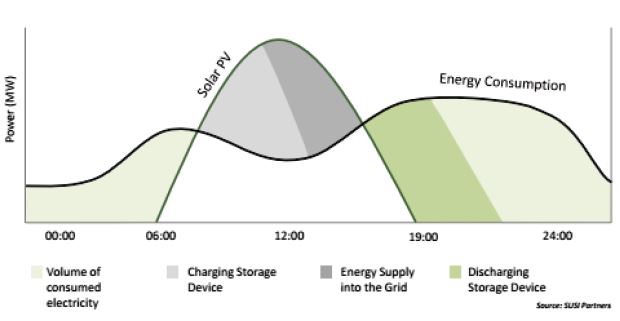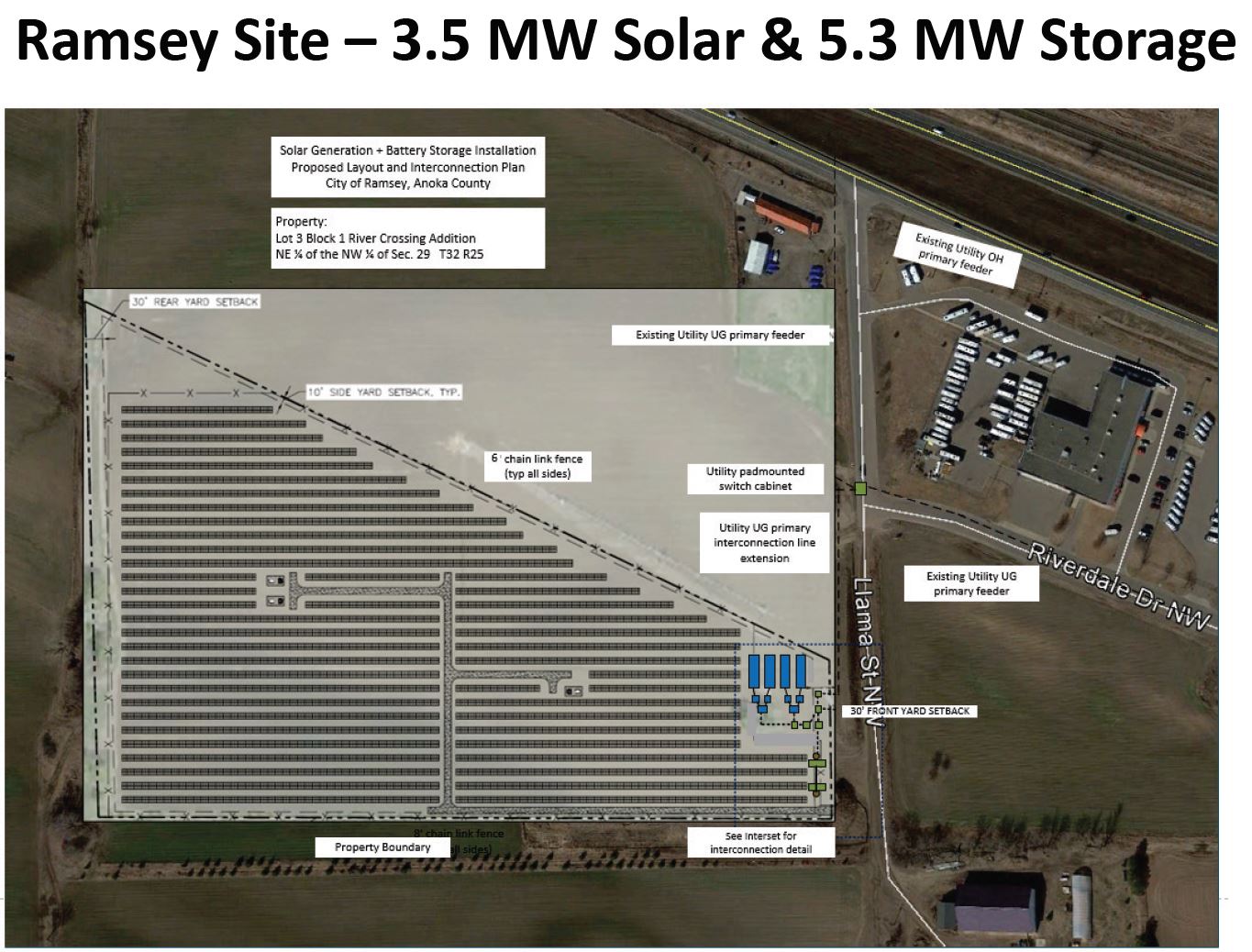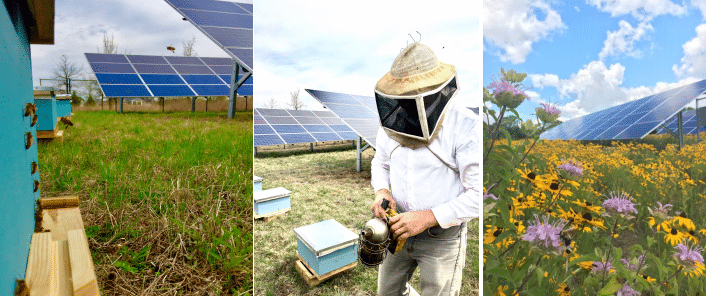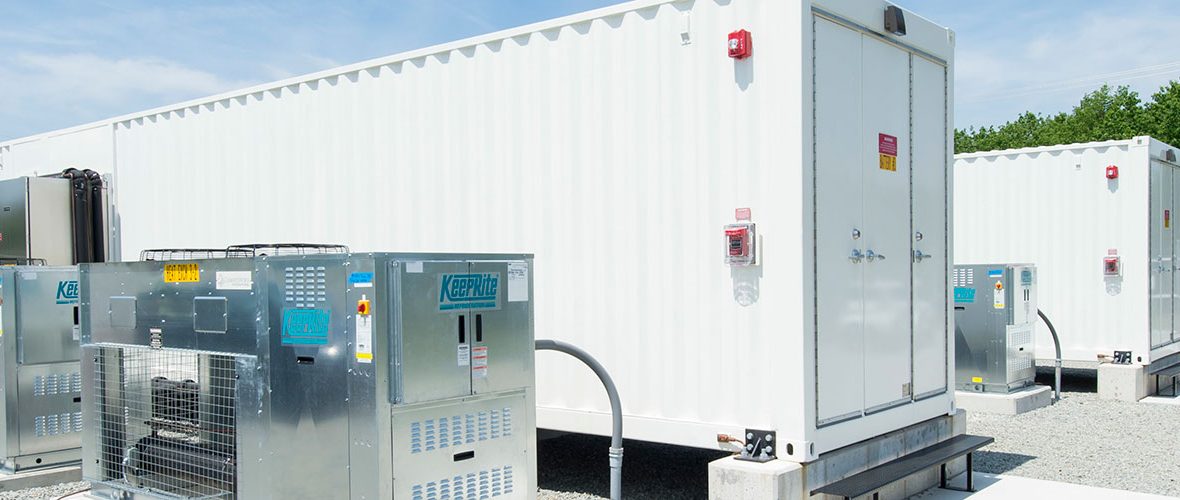In 2017 the University of Minnesota released a study – Modernizing Minnesota’s Grid: An Economic Analysis of Energy Storage Opportunities – projecting that solar+storage would be more cost competitive than a natural gas peaker plant in 2018 (a quick reminder that it is more than halfway through 2018).

In the document (page 42) Connexus Energy put forth their logic for solar+storage to offset peak demand. The utility found that a majority of members were willing to pay up to 5% more for their electricity for efforts to reduce greenhouse gas emissions. When they combined this with the demand charge offset that comes from solar+storage, the economics made sense, specifically for the utility. And now, as a result of an economic analysis, the utility has broken ground on two solar+energy storage facilities.

.
Connexus Energy is based in Ramsey, Minnesota and serves 130,000 customers in portions of seven counties in the central part of the state, particularly Anoka and Sherburne Counties. The cooperative utility began looking at batteries in 2016, but found they didn’t yet pencil. However, since then the economics have changed and now the utility projects savings of around $4 million a year through peak load reduction.

The Connexus projects consists of two solar gardens, one each in Ramsey and Isanti County’s Athens Township. The Connexus solar project is being developed by Engie, a French energy firm, while Florida’s NextEra Energy is taking care of the storage system.

The Ramsey site consists of 13,851 solar modules and totals 3.4 MW-AC. The panels will be at a fixed tilt on 1,515 piles (see image of piles above). The facility will include a 5.3 MW / 10.6 MWh lithium ion energy storage facility.
The Athens site is a 6.5 MW-AC facility with 27,189 solar modules. The facilities will be built on 2,940 individual piles. This site will be coupled with a 9.7 MW / 19.4 MWh lithium ion energy storage system.

Connexus Energy has been part of the push for pollinator-friendly solar arrays. Also located in Ramsey, MN is one of their solar plants that integrates honey production.

And with that, pv magazine would like to invite our readers to enjoy some of this wonderful solar-powered honey. The first two readers to comment on this article – with a reachable email address – will be sent an 8 oz jar of honey produced from a solar power pollinator friendly farm.
This content is protected by copyright and may not be reused. If you want to cooperate with us and would like to reuse some of our content, please contact: editors@pv-magazine.com.








!!!CMON DOWN!!! GET YOUR SOLAR POWERED HONEY!!!!
Sounds like a great project! Can’t wait for Mi to get some of these going.
Ben, are you here for our honey? We’d love to send it to you….
Revolutionary way of combining production of clean energy with saving the bees – and ultimately, the planet!
Robbin – I see honey in your future!
Great way to build a system. Produce clean energy, creating a healthy environment for our pollinators and generating income for local bee keepers. This is clearly a model for others to follow.
Just think of the potential to have solar pollinator gardens protecting the environment and producing electricity and honey and the hard working bees also pollinating surrounding crops.
The initial emails have been sent to the first commenters. The backups, and the timing of their comments, are noted in case no email response.
May your honey forever be sweet.
I feel like I’m too late for this but I would love some solar and bee powered honey!
Very exciting to see the continuing price declines with solar+storage, and love these pollinator friendly solar projects!
Great to see a cooperative leading- the key is how the economics make this work- furthermore the cost curves for both solar and storage indicate that this project is merely the beginning
Green (financially) and Green (environmentally). Salvo to Connexus Energy for leading and as a large cooperative, the implications are significant.
Great idea! Multiple uses for these solar properties are a brilliant use of the resources. Someone will have to let the goats out when the grass gets high enough 🙂
Brilliant Idea! It is nice starting to save the environment and save money as well as be healthy always.